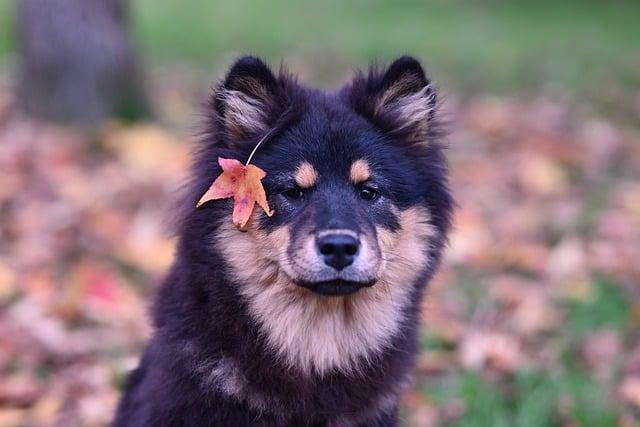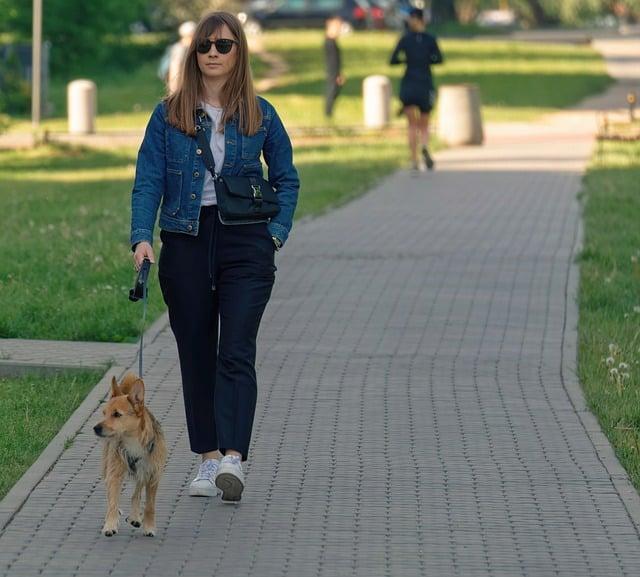Have you ever noticed your dog gently placing a paw on you during a quiet moment? This simple gesture speaks volumes about their affection and need for connection. Imagine your furry friend, feeling a surge of love and trust, reaching out to you as if to say, “I’m here, and I need you.” This behavior is not just a sign of companionship; it’s a reminder of the bond you share. By understanding this instinct, you can deepen your relationship, ensuring your dog feels secure and cherished. Embrace this touch—it’s their way of saying, “You matter to me.”
Contents
- Understanding the Emotional Connection Behind Your Dogs Paw Placement
- Interpreting Your Dogs Body Language for Better Communication
- Addressing Behavioral Concerns: When Pawing Becomes Excessive
- Enhancing Your Bond: Positive Reinforcement Techniques for Pawing Behavior
- Q&A
Understanding the Emotional Connection Behind Your Dogs Paw Placement
When your dog places a paw on you, it’s more than just a simple gesture; it’s a profound expression of their feelings and needs. This behavior often stems from a deep-seated instinct to connect with their human companions. Dogs are pack animals, and in their world, physical touch is a vital part of communication. By resting their paw on you, they are signaling their desire for closeness and reassurance, reinforcing the bond that you share.
Moreover, this action can indicate a range of emotions, from affection to anxiety. When a dog feels secure and loved, they may use their paw as a way to seek attention or initiate play. Conversely, if they are feeling uncertain or stressed, placing their paw on you can serve as a comforting mechanism. It’s their way of saying, “I trust you,” or “I need your support.” Understanding these nuances can help you respond appropriately to your dog’s emotional state.
Another important aspect to consider is the context in which this behavior occurs. Dogs are incredibly perceptive and often mirror the emotions of their owners. If you’re feeling down or anxious, your dog may instinctively place their paw on you as a means of offering comfort. This empathetic response highlights the emotional intelligence of dogs and their ability to sense human feelings. Recognizing these moments can deepen your relationship and enhance your mutual understanding.
Lastly, it’s essential to acknowledge that every dog is unique, and their reasons for paw placement may vary. Factors such as breed, personality, and past experiences all play a role in shaping their behavior. By observing your dog’s body language and the situations that prompt this action, you can gain valuable insights into their emotional world. Embracing this understanding not only enriches your bond but also fosters a more harmonious living environment for both you and your furry friend.
Interpreting Your Dogs Body Language for Better Communication
Understanding your dog’s body language is crucial for fostering a deeper bond and enhancing communication. When your furry friend places a paw on you, it can signify a variety of emotions and intentions. This seemingly simple gesture can be a powerful form of expression, revealing what your dog is feeling at that moment. By paying attention to the context and accompanying body language, you can decipher the message your dog is trying to convey.
One common interpretation of this behavior is **affection**. Dogs often use physical touch to express their love and attachment to their humans. When your dog gently rests a paw on you, it may be their way of saying, “I love you” or “I want to be close to you.” This gesture can be particularly evident when your dog is relaxed, with a wagging tail and soft eyes, indicating a sense of comfort and security in your presence.
Another reason for this behavior could be **seeking attention**. If your dog places a paw on you while you’re busy or distracted, they might be trying to engage you in play or simply asking for some affection. This is often accompanied by other signals, such as whining, nudging, or looking directly at you with an eager expression. Recognizing this can help you respond appropriately, ensuring your dog feels valued and heard.
Lastly, your dog may be expressing **anxiety or insecurity**. If the pawing is accompanied by signs of distress, such as a tucked tail or lowered ears, it may indicate that your dog is feeling uncertain or needs reassurance. In these cases, offering comfort through gentle petting or soothing words can help alleviate their anxiety. By interpreting these signals correctly, you can provide the support your dog needs, strengthening your relationship and enhancing their overall well-being.
Addressing Behavioral Concerns: When Pawing Becomes Excessive
While a gentle paw on your leg can be endearing, excessive pawing can signal underlying behavioral concerns that need to be addressed. Understanding the reasons behind this behavior is crucial for fostering a harmonious relationship with your dog. Often, excessive pawing can stem from anxiety, attention-seeking, or even a lack of proper training. Recognizing these triggers is the first step in managing the behavior effectively.
One common reason for excessive pawing is **anxiety**. Dogs may use their paws to seek comfort or reassurance when they feel stressed or uncertain. This behavior can be exacerbated by changes in their environment, such as new family members, moving to a new home, or loud noises. If you notice your dog pawing at you more frequently during stressful situations, it may be time to implement calming techniques, such as creating a safe space or using anxiety-reducing products.
Another factor to consider is **attention-seeking behavior**. Dogs are social animals and often crave interaction with their owners. If your dog learns that pawing gets your attention—whether it’s positive or negative—they may continue to do it excessively. To combat this, it’s essential to reinforce positive behaviors through training. Reward your dog when they engage in calm behavior, and redirect their attention when they begin to paw excessively.
Lastly, a lack of **training and boundaries** can contribute to excessive pawing. Dogs thrive on structure and understanding what is expected of them. If your dog has not been taught appropriate ways to communicate their needs, they may resort to pawing as a means of expression. Establishing clear commands and consistent responses can help your dog learn more acceptable ways to interact with you, ultimately reducing the frequency of excessive pawing.
Enhancing Your Bond: Positive Reinforcement Techniques for Pawing Behavior
Understanding your dog’s pawing behavior is the first step towards enhancing your bond with them. When your furry friend places their paw on you, it can signify a range of emotions, from affection to a desire for attention. By recognizing these signals, you can respond appropriately and reinforce positive interactions. This not only strengthens your relationship but also helps your dog feel more secure and understood.
To effectively use positive reinforcement, start by observing the context in which your dog paws at you. Is it during playtime, when they want to go outside, or simply when they seek your affection? Once you identify the triggers, you can respond with **praise, treats, or playtime**. For instance, if your dog paws at you for attention, reward them with a gentle pat or a tasty treat when they sit calmly beside you instead. This teaches them that calm behavior is more rewarding than pawing.
Incorporating training sessions into your routine can also be beneficial. Use commands like “sit” or “stay” before giving them attention or treats. This not only reinforces good behavior but also engages your dog mentally. When they successfully follow your command, shower them with **enthusiastic praise** and a reward. This creates a positive association with following your lead, making them less likely to resort to pawing for attention.
Lastly, consistency is key in any training approach. Ensure that all family members respond similarly to your dog’s pawing behavior. If one person rewards pawing while another discourages it, your dog may become confused. By maintaining a unified approach, you can effectively teach your dog that there are better ways to communicate their needs, ultimately leading to a deeper and more fulfilling bond between you both.
Q&A
-
What does it mean when my dog puts his paw on me?
Your dog is likely seeking attention, affection, or reassurance. This behavior is a way for them to communicate their needs and feelings, showing that they trust you and want to connect.
-
Is my dog being dominant when he puts his paw on me?
Not necessarily. While some dogs may use pawing as a way to assert themselves, it is more commonly a sign of affection or a request for interaction. Understanding your dog’s body language can help clarify their intentions.
-
Should I encourage this behavior?
Encouraging your dog to put their paw on you can strengthen your bond. However, it’s important to set boundaries if the behavior becomes excessive or disruptive. Positive reinforcement can help guide them appropriately.
-
What if my dog only puts his paw on me when he’s anxious?
If your dog uses pawing as a way to cope with anxiety, it’s essential to address the underlying issue. Providing comfort, creating a safe space, and consulting a professional trainer or veterinarian can help manage their anxiety effectively.
understanding why your dog places a paw on you can deepen your bond and enhance communication. Embrace this gesture as a sign of affection and trust, and respond with love to strengthen your relationship with your furry companion.




